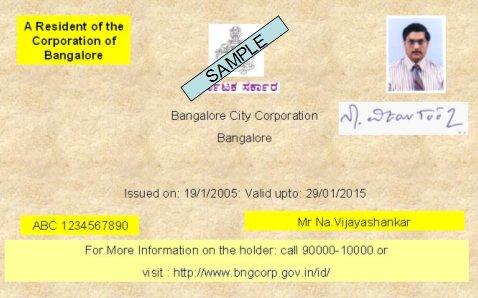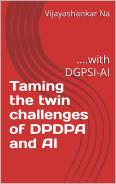[P.S: The political developments since last night in Tamil Nadu has thrown up some interesting elements which surprisingly lead to ITA 2000/8 and operation of Section 65 of ITA 2000/8 in the records of Apollo Hospital. Following discussion is for academic purpose only and based on current developments as reported in the media.]
Recently, a case decision was brought to my notice which triggered a need to discuss the Jurisprudence behind application of Section 65 of ITA 2000/8 which I have often held is wrongly applied by police in many cases. Some advocates also have a difference of opinion in this regard and hence there is a need to clarify the position as I read it from the Act.
This is a decision of the Andhra High Court dated 29th July 2005 and concerns the criminal petitions filed by Syed Asafuddin and Ors vs The State of Andhra Pradesh for quashing of FIR filed under Sections 409, 420 and 120 B of IPC and Section 65 of ITA 2000 as also Section 63 of Copyright Act.
The Complaint was registered in respect of an alleged action by employees of Tata Tele Services to re-set mobile handsets given by Reliance Infocomm to its customers under a special scheme with service provider binding for three years.
The Service provider (Reliance Infocomm) had embedded a code in the handset that it could connect only to the designated Reliance network. It was alleged that Tata Tele employees assisted the customers of Reliance (who had purchased the handsets at a heavily discounted price with a commitment to stay on the Reliance network for a minimum of 3 years), to remove the restrictive code so that they could be used on other networks such as Tata Telecom.
Obviously, this caused a loss to Reliance and was against the letter and spirit of its contract with the customers who had availed the benefits.
The judgement has thrown enough insights into whether the sections applied were sustainable or not and is therefore illustrative.
The point of contention in the case for our focus was whether Section 65 of ITA 2000 was the right section to have been applied or should it have been Section 66?.
No doubt the Court came to the conclusion that Section 65 was appropriate and did not agree to quash the FIR but its argument in coming to this conclusion appears faulty. However the decision is a decision and may be looked at as a “Precedent” until overturned.
We need to also keep in mind the fact that this was not the final trial but a decision related only on the quashing of FIR. We should not therefore jump to a conclusion that Section 65 is applicable in such cases in future.
In order to debate this further, section 65 of ITA 2000/8 is reproduced here for immediate reference.
Section 65: Tampering with computer source documents.-
Whoever knowingly or intentionally conceals, destroys or alters or intentionally or knowingly causes another to conceal, destroy, or alter any computer source code used for a computer, computer programme, computer system or computer network, when the computer source code is required to be kept or maintained by law for the time being in force, shall be punishable with imprisonment up to three years, or with fine which may extend up to two lakh rupees, or with both.
Explanation.–For the purposes of this section, “computer source code” means the listing of programmes, computer commands, design and layout and programme analysis of computer resource in any form.
As regards Section 65 of ITA 2000/8, the critical aspects are
a) Whether some computer source code was concealed, destroyed or altered?
b) Whether the deleted “Computer Source Code” was required to be kept or maintained under law for the time being in force?
In the instant case, there was a “Source Code” that was “Altered or deleted” and hence there is no dispute on this.
However, the dispute is on the fact whether the deleted source code was in fact required or maintained by law for the time being in force or not.
If there was no need for the source code to be kept or maintained under law for the time being in force, then there is no offence made out under this section. If so then an offence under Section 65 is made out.
(P.S: I am not ruling out the offence being recognized in this case under Section 66 which was not included in the FIR. I restrict my discussion only to the jurisprudence surrounding Section 65).
The accused here is Tata Tele. We need to ask “Was there any need under law for Tata Tele to keep the source code or maintain it for the time being”? . Obviously Tata Tele and Reliance had no privity of contract in this matter. If at all there was any obligation it would be in the contract between Reliance and the Customer. Tata Tele can also claim that they made the code alteration at the request of the Reliance customer.
Did the contract form between Reliance and its customer specify that the Customer was prohibited from making his handset compatible to other networks? and Was such a contract produced as evidence? …it appears that the answers to these questions are in the negative.
If you want to make the customer the “accused”, then “mens-rea” may need to be proved. It could be a civil wrong but would it be a criminal offence?…difficult to say.
Further this could be determined by the fact whether the customer was clearly informed (not through a standard form contract where a clause is buried in small print) that the handset which has been “Purchased” by the customer contains a “Hidden Code” and he is not to delete or alter the code. If he has not been informed , this could be a “Computer contaminant” introduced by Reliance as defined under Section 43 of ITA 2000/8 since this hidden code could be held as a code “that monitors whether the customer is using Reliance network or some other network”.
The interesting part of the judgement is in the interpretation of the section regarding the maintenance of the computer source code under law.
Firstly the judgement has tried to create an artificial wedge between “Kept” and “Maintained” and associating the words “under law” only with the word “Maintained” and not with the word “kept”. Accordingly, the judgement has considered that “When the computer source code is required to be kept” and “maintained by law for the time being in force” as two different situations.
Then, for no specific reason, the judgement continues stating “going by the allegations in the complaint, it becomes clear that the second respondent (i.e: Reliance) is in fact maintaining the computer source code. If there is allegation against any person including the petitioners, certainly an offence under Section 65 of I.-T. Act is made out.”
Does the Judge mean that there was a need to maintain source code under law and it was deleted by the accused?. …it is unclear.
The Judge seems to have missed the point that what the section intends is that if any person including the petitioner or the respondent was required to keep the information for a certain period of time and it was deleted before such a time, then only the offence is made out and not otherwise. If the respondent is maintaining the code and the petitioner has deleted/altered it in another device, the offence cannot be imputed.
In our opinion there was no responsibility/obligation for Tata Tele, the accused under any “law” to maintain the source code. If such “law” could exist, it could be in the TRAI guidelines on use of ” Network bound handsets” which would bind all the licensed players under an obligation not to tamper with the codes of their competitors. There is no evidence of the existence of such a guideline nor was it quoted in the judgement.
In view of the above, without stating that what Tata Tele has done is correct and unpunishable, I would still consider that the view of the honourable Court that Section 65 was applicable in this particular case appears un-sustainable.
Also, from the facts of the case it appears that what might have happened could be that it is not a case of deletion of any data. It could be a case where a data piece was added to what was already present in the handset within the larger code set created by the handset manufacturer. Accordingly, “An additional Code enabling acceptance of Tata Telecom network connection” might have been inserted without deleting the “Existing code enabling acceptance of Reliance network connection”. Hence whether this was a case of “Concealing, deletion or altering” of source code inserted by Reliance is itself doubtful.
The original source code on the handset was inserted by the handset manufacturer like Samsung and not Reliance. This was perhaps first modified by Reliance to delete acceptance by networks other than Reliance. Tata Tele might have then restored the handset to its original status. Hence there appears to have been lack of cause of action for Reliance to invoke Section 65 in this case. I would therefore not consider this judgement as a precedent to be followed.
Now coming back to what attracted my attention immediately to Section 65, is the fact that within all the political turmoil caused by the recent developments in Chennai, there has been an allegation by the TN Chief Minister (Present) that the medical records of J Jayalalitha might have been tampered with by the doctors who attended on her before and after her admission to Appollo Hospital. With this allegation, there is a public notice of a potential cognizable crime. Hence any and all evidence that could have a bearing on the offence becomes “Evidence” that needs to be preserved for the time being under IPC.
Since it is expected that Appollo Hospital has all records in electronic form and there should be several e-mail and video conference records at Apollo including the interaction with the London based doctor, all these evidence will be “Electronic Evidence” and if they are deleted because they may be incriminating to the interests of either the accused persons or even Appollo Hospital itself, we will have a possibility of a Section 65 offence being committed by Appollo Hospital and others.
If there is any Commission of enquiry appointed for the investigation there is a possibility that the hospital may refuse to provide any evidence since they would have been deleted. It is therefore imperative for Mr Panneer Selvam or any Court in TN to immediately order for securing the evidence that may be present in connection with this suspected offence and also give a notice to the hospital that Section 65 would be invoked if the information is wrongfully deleted.
Naavi







